You can knit a TakOri hat with knitting needles using the crown decrease pattern using voluminous and fluffy yarn. The unusual headdress model has become especially popular and has been in demand for more than one season. The headdress received its name from the surname of the designer and creator of the model - Svetlana Takkori.
A little about the model
Svetlana Taccori is a fashion designer who produces clothes under her own brand.
Turn-up hats were popular back in the 1980s, but their popularity gradually faded. Then Svetlana came up with a model of a hat made of fluffy mohair, made with an English elastic band of such a length that it can be turned up several times. Now such hats are again at the peak of popularity, as they suit sports, casual and classic styles.
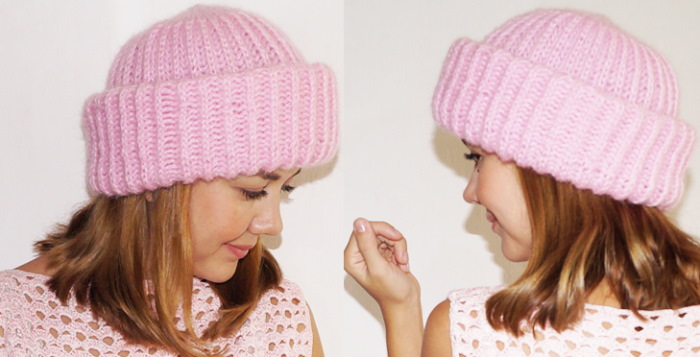
The peculiarity of this model is its length (from 45 cm), which has at least 1 flap. Several layers of fluffy wool reliably protect the head and ears from frost, and is also a stylish accessory for the winter.
Necessary tools and materials
The TakOri hat can be knitted using the crown decrease pattern, you need the skill of knitting elastic, but it is considered the simplest and is suitable for beginners. For this, straight knitting needles and wool yarn (mohair) are used.
At the same time, it is taken into account that the English-style elastic pattern requires one and a half times more thread than any other knitting pattern.
Different types of knitting require different knitting needles - straight ones for making scarves or clothes, circular ones for scarves and hats, stocking ones for socks, and auxiliary ones are also used for knitting individual elements of the pattern.
The choice of knitting needles depends on the experience of the craftswoman and the advice of the masters. Most often, the number of knitting needles is chosen based on the thickness of the yarn - they should be 1 unit larger than the thickness of the threads. But often, when working with downy yarn, experienced craftswomen choose thicker knitting needles so that the fabric is more airy.
The needles are also selected according to the type of yarn you are going to work with: needles that are too thick can make the fabric loose, while needles that are too thin can make it tight. That is why yarn manufacturers often leave recommendations for choosing the needle number on the packaging of skeins of yarn. The needle number corresponds to their thickness in mm.
In addition to thickness, knitting needles can be of different lengths and made of different materials. The wider the knitted fabric, the more convenient it is to work with long knitting needles, especially if they have tips.
Beginner knitters are advised to use plastic, wooden or bamboo needles because of their light weight. Metal needles are considered more durable and less brittle, and they glide well over wool threads.
To make the TakOri hat, we recommend using medium-length stocking or circular knitting needles (No. 4-5).
To select yarn and calculate the number of skeins, take into account the conventional thickness. This indicator is on the packaging of the threads, it indicates the number of meters per 100 g of weight. The more meters in 100 g of yarn, the thicker the thread and its consumption is greater.
The average thickness is considered to be 300 m per 100 g - this yarn is easiest to work with for beginner knitters.
For the original Takori hat, mohair on silk (silk content of at least 25%) is selected in packages of 200-210 m per 25 g. Thin threads are folded several times before work.

But, if desired, other materials with similar characteristics can be used:
- mohair with added silk (200-210 m per 25 g) in 5 layers;
- regular wool - angora or mohair (200-250 m per 100 g) in 2 folds.
The threads are folded several times, since the yarn is thin. If you want the headdress to be more durable and stronger, you should choose yarn with a small content of acrylic.
To ensure that the yarn does not shed, before starting work, soak it briefly in warm water and leave it to dry on a white cloth. If the paint comes off, it may remain on the canvas or be visible already during the soaking process.
Schemes with description of works for beginners
The TakOri hat with knitting needles and the crown decrease pattern involves a simple process of knitting a long piece on circular knitting needles, which allows you to make from 1 to 3 folds. The folds make the headdress more voluminous and warm. Even beginners can make such a model.
At the same time, it is important to take into account the features of this hat model.
| Peculiarity | What is needed |
| Length | From 45 cm to get the desired lapel |
| Seams | None, the product is one piece |
| Spokes | Circular short (No. 4) - about 40 cm |
| Yarn | Natural wool (angora, mohair, possible addition of silk or acrylic fibers) |
It is important to consider that the execution of the English-style pattern on different knitting needles may differ. Therefore, when working in a circle, markers or pins are used in the rows so as not to stray from certain stages of the work.
The creation of a headdress includes the following stages:
- take measurements from the head;
- perform knitting of a pattern;
- design the product.
To ensure that the headwear is neither too loose nor too tight, carefully measure the circumference of the head. This figure is taken by wrapping a tape measure around the head just above the eyebrow level.
The height of the headdress should be much greater than the depth. The formula for this indicator is: the length from the middle of the eyebrows to the base of the back of the head divided in half and multiplied by 2.5.
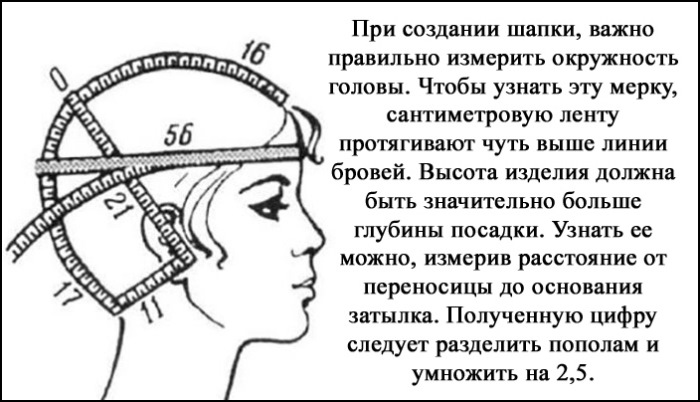
When making the base of the hat, any pattern or design that resembles an elastic band can be used. If other types of patterns are chosen, then a new model of the hat is obtained. Depending on the chosen elastic pattern, there may be special features of the work, but all loops are knitted in the usual way.
Regardless of the head circumference, the number of loops should always be a multiple of 4.
A single system of tapering the top is used for any pattern.
| Row | Description |
| 1, 6 | 3 loops together to the left, *1 front slip, front and back together and pull through the previous one, 1 back* (*repeat to the end), elastic 1*1. |
| 2-5, 7 and 8 | Elastic band 1*1 |
At the final stage, measure 10-15 cm of the working thread and cut it here. Insert a needle into the end of the thread, transfer the remaining loops onto it, tighten and fasten on the crown. This method of closing the loops allows you to wear the headdress on either side.
Classic elastic
Knitted hat Takori and the pattern for decreasing the crown of this model involves knitting with a rib. In the classic version, this pattern is called a rib 1 * 1. This name implies alternating front and back loops in rows. When working with circular knitting needles, this process is different.
To make the pattern in the classic way, in this example we use 1 skein of angora yarn and circular or stocking needles (No. 5). Beginner knitters are recommended to use circular needles for convenience, so that their hands do not get tired during the work.
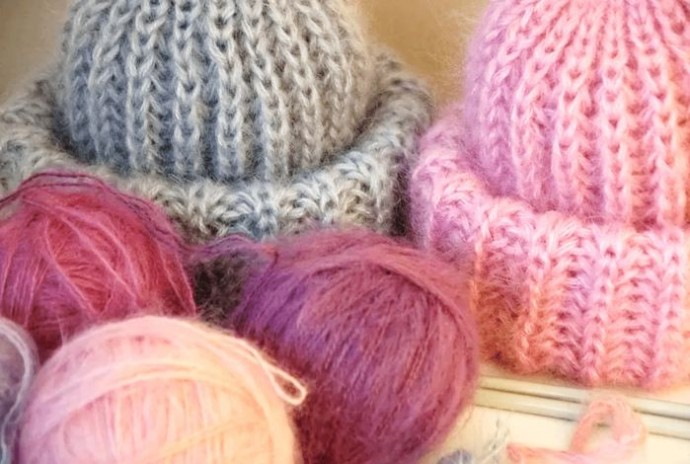
You may also need scissors and a hook. If you use another yarn, you can take another skein with a reserve, but this pattern is considered not only the easiest to perform, but also the most economical in terms of thread consumption.
In the diagram description, all elements are shown with initial letters for ease of reading (front - L, back - I, yarn over - H, side - B).
Knitting is done in the following order.
| Row | Description |
| Preparatory row | Cast on the required number of stitches (all L) |
| 1 and all odd | B, *L, I* (*repeat to end), B |
| 2 and all even | B, *I, L*, B |
| Height gain of the cap | Knit 43-46 rows (or more). 3 cm before the end, begin to decrease the crown, as indicated in the general diagram above. |
English elastic
An additional method of making elastic also requires a small amount of yarn, but is different in how it is done in rows.
In the diagram description, all elements are shown with initial letters for ease of reading (front - L, back - I, yarn over - H, slip stitch without knitting - S, unknitted stitch and yarn over of the previous row are knitted together purl/front - HNI/NNL).
In this example, cast on 80 stitches for a head size of 57-59 cm. If knitting for a smaller circumference, cast on about 76 stitches or less.
Knitting is performed in the following order.
| Row | Description |
| 1 | * L, N, S* (*repeat to end) |
| 2 and all even | With the canvas, *NNI, N, C*, NNI |
| 3 and all odd | They hook the thread behind the fabric and knit L with a loop on the knitting needle, *N is removed, hooking it to the back wall, NNL*, N is removed, hooking it to the back wall. |
| Height gain of the cap | Knit 43-46 cm with a 1*1 elastic band and proceed to narrowing 3 cm before decreasing. |
Diagram of the tapering of the top for this model.
| Row | Description |
| 1 | *L, NNI* |
| 2, 3 | according to the pattern of the classic elastic band 1*1 |
| 4 | according to the classic 1*1 elastic pattern, the last loop of the row is not knitted. |
| 5 | They start to decrease everything. 1. Turn the wrong side out, leaving the back wall in front. 2. Knit the front and back stitches together. 3. Continue this order further. |
| 6 | All L |
| 7 | 2 loops together L to the right. The rest are tightened with a needle and the thread is secured. |
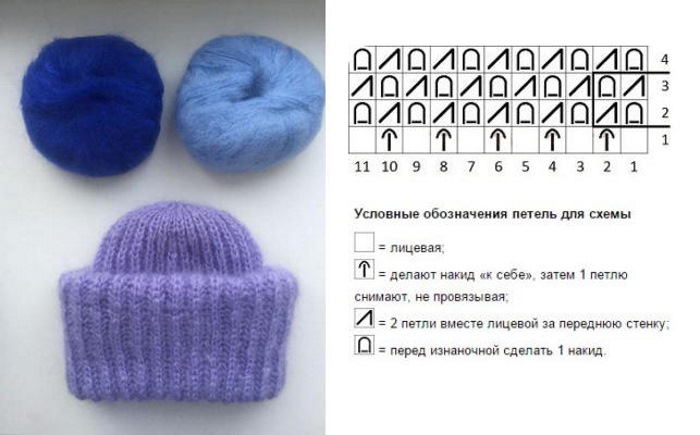
Lush elastic band in a circle
The Takori hat with knitting needles and the pattern of decreasing the crown implies circular knitting and in this example they explain how you can make a voluminous pattern without additional elements in the rows. This pattern makes the headdress more voluminous than the previous methods.
In this example, knitting needles No. 4 are used. For a head size of 57-59 cm, 56 loops are cast on in the preliminary row. If knitting for a smaller circumference, then about 52 loops or less are cast on.
In the diagram description, all elements are shown with initial letters for ease of reading (front - L, back - I, front is knitted into the loop of the previous row - LPP, back is knitted into the loop of the previous row - IPP).
Knitting is performed in the following order.
| Row | Description |
| Preparatory row | Classic elastic 1*1 |
| 1 | *LOP, 1I* (*repeat to end) |
| 2 | *1L, IPP* |
| Alternating 1-2 rows | Knit 42-45 cm - the main body of the headdress |
| Next 4-5 rows (about 2 cm) | Classic elastic 1*1 |
| Crown reduction | Indicated in the general diagram above |

English elastic with yarn overs in a circle
The Takori hat with knitting needles and the pattern for decreasing the crown implies circular work with knitting needles and this example shows an example of an English elastic band, which is performed with yarns. Craftswomen use this pattern most often when performing this model of hats.
In this example, cast on 56 stitches with #4 knitting needles for a head size of 57-59 cm. If you are making the item for a smaller head size, cast on 52 stitches or even less (based on your measurements).
In the diagram description, all elements are shown with initial letters for ease of reading (front - L, back - I, yarn over - H, slip stitch - S, purl knit with purl yarn over - INI, front with front yarn over - LNL).
The work is carried out in the following order.
| Row | Description |
| 1 | *before L make H, 1LS, 1INI* (*repeat to the end). In this row I knit without a yarn over, since there is no yarn over from the previous row yet, then in the next rows make with a yarn over. |
| 2 | *1ЛНЛ, before И make Н, 1ИС* |
| Alternating 1-2 rows | Knit 42-45 cm - the main body of the headdress |
| Next 4-5 rows (about 2 cm) | Classic elastic 1*1 |
| Crown reduction | Indicated in the general diagram above |
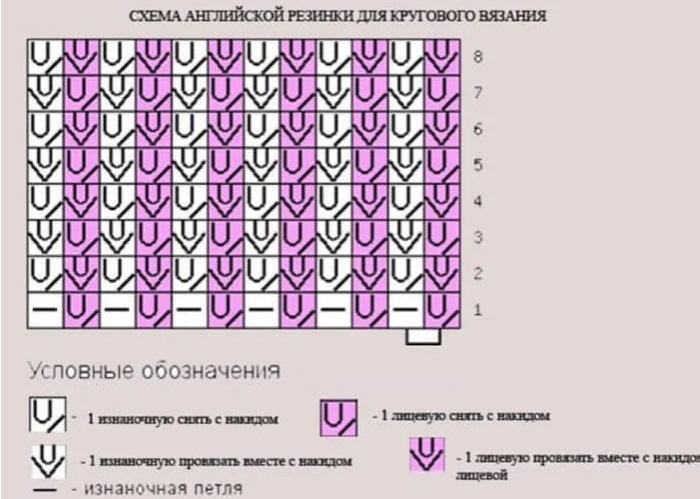
English elastic with yarn overs without decreasing
A variation of a simple method for making an English rib with yarn overs using circular knitting needles size 4.5. In this example, for a head size of 55-57 cm, cast on 56 stitches. If you are making a product for a model with different measurements, use the material calculation scheme as a guide.
For this example, we used 2 skeins of classic mohair yarn, folded into 2 threads.
In the diagram description, all elements are shown with initial letters for ease of reading (front - L, back - I, yarn over - H, slip stitch behind the front wall - SP, slip stitch behind the back wall - SZ, loop and yarn over together purl/front - PNI/PNL).
Knitting is done in the following order.
| Row | Description |
| 1 | *N, SP, L* (*repeat to end) |
| 2 | LNI, N, SP, *LNI, SP* |
| 3 | *N, SZ, PNL* |
| Alternating 2-3 rows | Knit 39-40 cm - the main body of the headdress |
| Finishing knitting | No decrease is performed. The end of the product is pulled together at the crown (the thread is pulled through all the loops using a hook and tightened). |

Methods of decreasing
Beginner knitters may find the classic method inconvenient or want, and the option without decreasing, where they simply pull the crown, is not suitable. In this case, they can try other ways to finish knitting hats on knitting needles.
| Method of decreasing | Description |
| Transition from one type of elastic to another | Visually organic transition from one type of elastic to another. 1. The working canvas is divided schematically into 3 parts or using markers (special ones, pins, etc.). 2. In each front row, 2 loops are tied together at the marked point. The first decrease is made behind the side loop, the following ones are placed evenly on the fabric so that the decreases are not noticeable on the finished work and look like a narrow decorative braid. 3. This reduction is done throughout the entire length of the headdress so that it tapers gradually. |
| Fitting the hinges | Reduce 4 loops in every 3rd row. Knit 2 loops together at once, taking into account the yarn overs. The location of the decreases is made evenly around the circumference. Such a decrease is made throughout the entire length of the headdress so that it narrows gradually. |
| Variation of loop fitting | They decrease in the same way as in the previous method, but at the end 4 triangles are formed, connected to each other.
The loops are divided visually or with a marker into 4 equal sections. The loops are decreased at the end and beginning of each section. To do this, tie together 3 loops (L, I, L) in every 4th row. These rows are knitted across the entire working fabric. |
Secrets for Beginners
- To determine the required number of knitting needles, the thread is folded several times. Then the volume of the knitting needle will be equal to the required thickness of the yarn.
- To ensure that the headdress fits loosely on the head and is not too tight in circumference, add another 1-2 cm to the measurements.
- In order for bulky wool yarn to reveal its warming properties, it is first placed in a cold place (you can put it in the freezer).
- Before starting work, carefully read the diagram and all the symbols so that you don’t have to correct any errors during the work process.
- To make a headdress on circular knitting needles, it is better to use a cord about 40 cm long.
- Craftswomen can knit with 2 threads from 1 skein, using the thread from the beginning and the end.
- It is easier to knit a hat if you use knitting needles that are smaller than the size recommended on the yarn package.
- If you are knitting a product for the first time, then you should cast on stitches with a small reserve, since the stitches may turn out to be too tight.
- The stitches are cast on using the Italian cast-on method to create an elastic edge and prevent the garment from bunching up.
- When working in a circle, the loops are knitted behind the back wall to make the fabric denser.
- During the work process, work sections are marked (decreases and increases, row counting, etc.) using marking rings or pins. A special counter is used to count rows.
- Too tight fishing line or cord on circular knitting needles can be softened by dipping it in boiling water for a few seconds.
- When working with dark colored yarn, place a light colored piece of fabric under the knees to make it easier to distinguish stitches and rows.
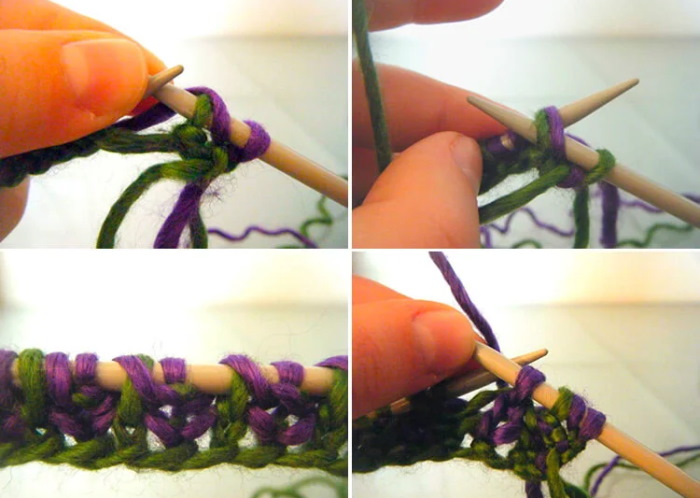
To knit a Takori hat with knitting needles, taking into account the pattern of decreasing the crown, they resort to the recommendations of experienced craftswomen who can tell you how to make a headband faster and more accurately.
Video on how to knit a Takori hat
In this video you will see how to knit a voluminous hat TakOri with an English elastic pattern.
